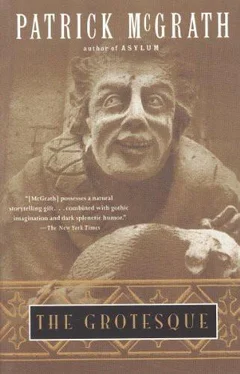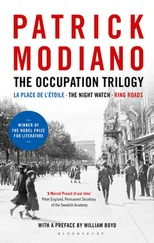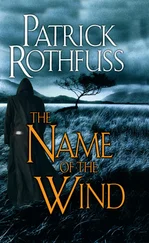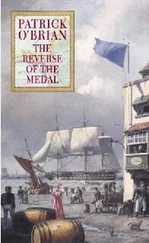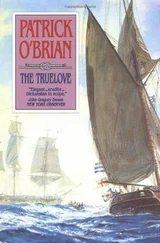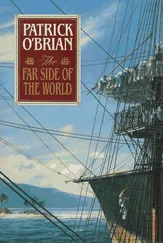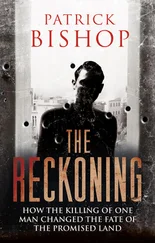So. I have told you what Harriet did on the doorstep that morning last autumn; but what sort of a spectacle did the Fledges present, standing there in their long dark overcoats, among their black suitcases? I will tell you: they were like a pair of gaunt and leafless trees.
Fledge himself is difficult to describe. Indeterminacy clings to the man like a mist. He has for so long concealed his true feelings that whatever core of real self yet glows within him, it is invisible to the naked eye. He is neat, of course, in fact he is impeccable, as befits a butler. Slim, slightly over medium height, with reddish-brown hair oiled back at a sleek angle from a peak dead in the middle of his forehead, he could be anything; but the presence at his side of Mrs. Fledge—Doris—situates and defines the man. For Doris is unmistakably a servant. As tall as her husband (and thus a clear head taller than me), thin as a rake, with a sharp, pinched face and black hair scraped back off her forehead and threaded with iron-gray wires, her being is indelibly stamped with the mark of domestic toil. Her nose is prominent and beaky, and her eyes are very dark, iris and pupil both so black they seem fused in a single orb with the merest pinprick of light dead in the center. Those black eyes lend to her face a rather opaque, birdlike quality, and though the simplicity of the woman’s nature very soon becomes apparent, at first sight she gives the appearance of a large crow, an unblinking alien to human affairs, a corvine transmigrated into woman’s form. Only the tip of her nose, enlivened by a network of tiny broken blood vessels, lends color and humanity to her face. And thus they presented themselves, the ghoul and the crow, and then they were over the threshold and under my roof.
It occurs to me that you may be wondering why we need a butler at all, so I should perhaps explain that this was, for Harriet, an indispensable part of “observing the proprieties.” She was brought up in the belief that a house was not a house without some sort of manservant in it. Not that she’s a snob, but she so totally assimilated the outlook of her father, the colonel, that she finds it impossible, in some respects, to adapt to changing social and economic conditions. Failure to adapt, I would tell her, leads to extinction; but she never cared. “Let us die out then,” she blithely replied, “but let us at least do it comfortably.” Hence the butler. We’ve always had one, but the last, an ancient fossil called Dome, died of old age in the summer, and his wife followed him to the grave within a fortnight.
Harriet would then have led them down the hall and through to the back of the house, and so to their quarters, a large, low-ceilinged room at the end of a dark, flagstoned passage, adjacent to an ancient bathroom with tarnished brass taps and a hundred-year-old lavatory. Having been installed in these obscure regions, the Fledges then, presumably, were shown over the house and had their duties explained to them. By the time the gong went for lunch they had taken root.
What else should you know before we go on? The house is called Crook. It is a sixteenth-century manor house, the basic plan of which is the E-shape, two gabled wings projecting at either end and a porch in the middle. Constructed of brick and timber, the walls are now completely overgrown with ivy, and the windows peer through the foliage like the eyes of some stunted and shaggy beast. There is moss between the roof tiles, and in front of the house the driveway curves round a small pond overgrown with rushes and coated with a thick green scum. To the right of the house a cobble-stoned alley leads to the back yard, which is enclosed on two sides by empty stables and outhouses, and on the third, facing the back door, by a brick wall that gives onto the vegetable garden and the orchard. Off to the left of the house stands the barn. Crook, curiously, faces south, a remarkable decision on the part of the builder, given the sixteenth-century belief that the south wind brought corruption and evil vapors. It requires extensive work, particularly the roof, which leaks, and the plumbing, which is not only unreliable but noisy. A flushed toilet rumbles like thunder, in Crook.
House and barn stand in the few acres that remain of a once-sizeable estate; only the pig farm down in Ceck’s Bottom has not been sold off, largely because it’s not worth anything. Behind the house, to the north, the land drops gently to the valley of the Fling, a narrow, serpentine river that soon slips out of sight on its way to the Ceck Marsh. This is an extensive stretch of wild country that lies beyond the village of Ceck, the spire of whose Norman church is visible over the distant treetops. I shall have more to say about the Ceck Marsh shortly. On the far side of the valley the land begins to climb quite steeply, and here open fields give way to dense woodland, beeches and oaks mainly. The village lies to the east, while to the west the trees gradually thin out to a jumble of copses and dells, among which a famous colony of rocks has long been established. This is abrupt, uneven country, full of hills and woods, and therefore full of birds. Ten miles further west you come to a market town called Pock-on-the-Fling; this is the nearest settlement of any size. Crook itself lies within the parish of Ceck, in the northeast corner of Berkshire, and my story begins in the autumn of 1949.
It was shortly after the arrival of the Fledges that a rather bizarre incident occurred, one to which I paid no more than a cursory attention at the time but which now strikes me as being charged with a sort of eerie, portentous significance. Have I told you that I was to deliver an important lecture to the Royal Society of Paleontology, a lecture concerning a species of late Mesozoic predatory carnivore that I discovered myself in East Africa as a young man, and to whose bone structure I had devoted my entire career? Phlegmosaurus carbonensis (so named because the bones came up slightly charred—Greek phlegein, to burn) has, I still believe, quite revolutionary implications not only for the science of paleontology but for zoology in general—but I need not weary you with that now. The point is, it was my habit, when I still had the use of my limbs, to think out my lectures in the Ceck Marsh; the silence and the solitude were somehow conducive to mental rigor and clarity, I found.
So one afternoon I set off with a flask of whisky and a stout stick, and after tramping down a soggy cart track between thick growths of birch and alder I found myself beneath a vast gray sky with miles of flat, boggy fen before me and a lake in the distance. The air had a smoky, autumnal tang to it, I remember, and as I picked my way over the rough damp clumps of peat and moss, all tufted with marsh grass and bristling in the wind, and puddled between with rank, black water, my heart exulted at the stillness and desolation of it all. Wildfowl rose from their nests in the weeds and with a great honking flurry went flapping off towards the water, and I came squelching on through in my Wellington boots, with my thick tweed cap pulled low against the bite of the wind.
It was when I had settled myself on a hummock of dry bracken close to the edge of the lake, and was casting my eye idly over the gray, wind-furrowed water, that I noticed a bulky horned object half-submerged in a bed of reeds close by. I splashed forward through the shallows to investigate, and discovered to my astonishment that it was a dead cow. I poked at it with my walking stick, then with the crook of the stick I hooked its horn and dragged it further into the shallows, and as I did so I caused the head to rise and water poured from its empty eye sockets as though from a fountain. Then the great body began to turn, began to go belly-up, and suddenly a foul, nauseating stench was released into the air and a pike, a big one, four feet long, slid out of the cow’s belly and gazed at me for an instant, its gills quietly lapping, before gliding away into the depths of the lake.
Читать дальше
